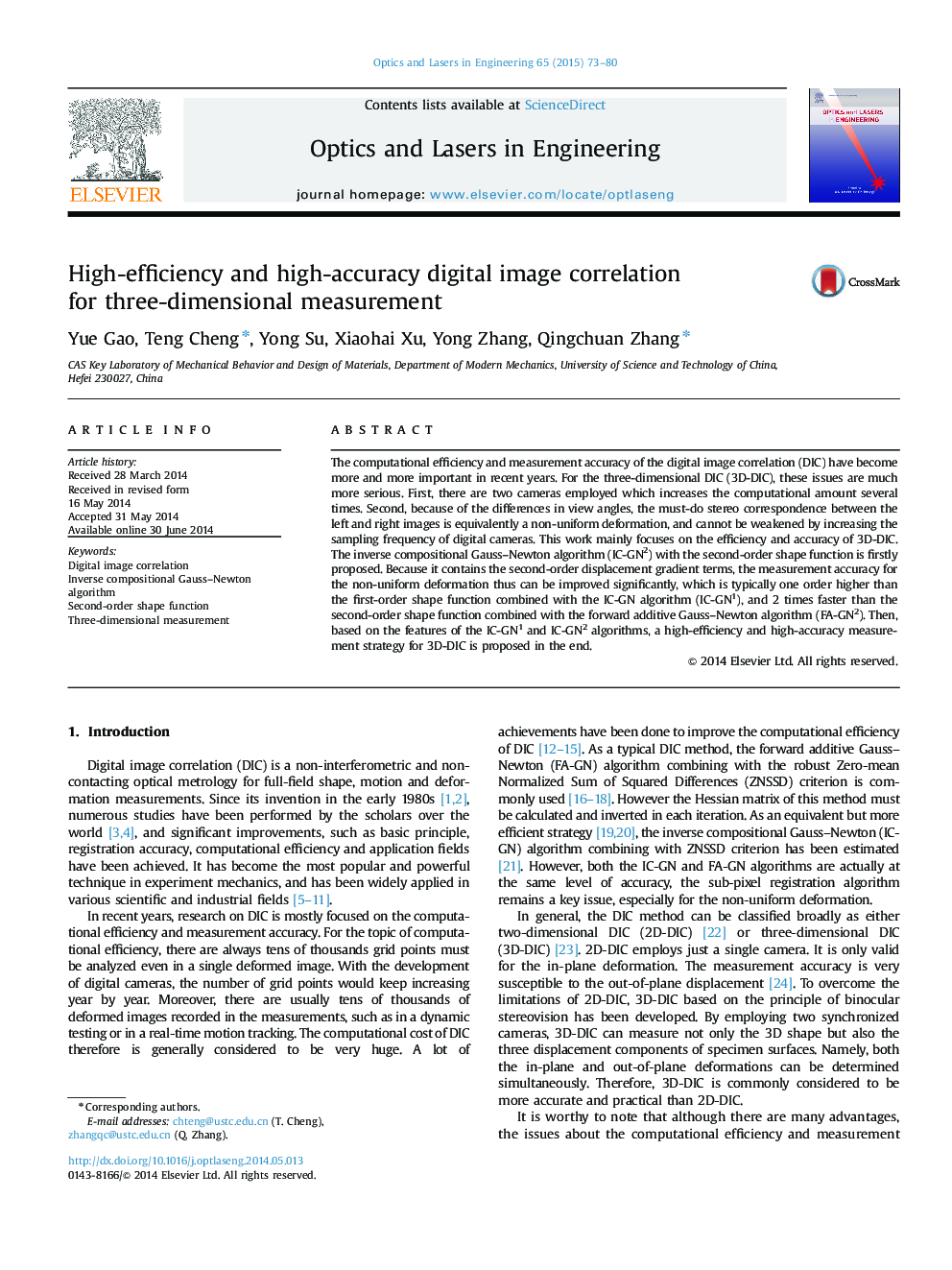| Article ID | Journal | Published Year | Pages | File Type |
|---|---|---|---|---|
| 735564 | Optics and Lasers in Engineering | 2015 | 8 Pages |
•Inverse compositional Gauss–Newton with second-order shape function is proposed.•Simulation results show that the new algorithm has second-order precision.•Simulation results show that the new algorithm is faster than forward algorithms.•Experiment results further validate the speed and precision of the new algorithm.•The new algorithm is practical on large deformation and stereo correspondence.
The computational efficiency and measurement accuracy of the digital image correlation (DIC) have become more and more important in recent years. For the three-dimensional DIC (3D-DIC), these issues are much more serious. First, there are two cameras employed which increases the computational amount several times. Second, because of the differences in view angles, the must-do stereo correspondence between the left and right images is equivalently a non-uniform deformation, and cannot be weakened by increasing the sampling frequency of digital cameras. This work mainly focuses on the efficiency and accuracy of 3D-DIC. The inverse compositional Gauss–Newton algorithm (IC-GN2) with the second-order shape function is firstly proposed. Because it contains the second-order displacement gradient terms, the measurement accuracy for the non-uniform deformation thus can be improved significantly, which is typically one order higher than the first-order shape function combined with the IC-GN algorithm (IC-GN1), and 2 times faster than the second-order shape function combined with the forward additive Gauss–Newton algorithm (FA-GN2). Then, based on the features of the IC-GN1 and IC-GN2 algorithms, a high-efficiency and high-accuracy measurement strategy for 3D-DIC is proposed in the end.
